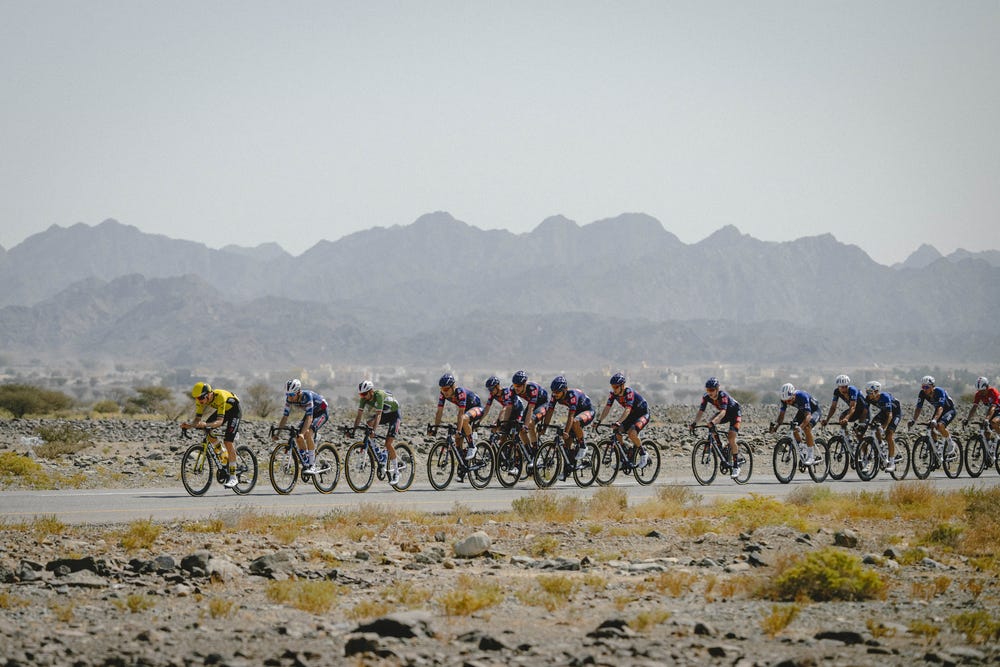How to make pro cycling more diverse - part one
Cycling has an ethnic diversity problem. Here's how I would fix it.
Compared to most other major sports, professional cycling is lagging behind in its ethnic diversity. Less than 5% of the WorldTour is non-white, while around 50% of the men’s English Premier League is made up people of colour.
The sport is dominated by Western Europe. Pockets of internationalisation have emerged in the past two or three decades, with riders from North America, Australia and some from Africa and South America gaining a level of access to the elite levels of road cycling. But the truth remains that cycling is much harder to access if you don’t come from a cycling-mad European nation and an economically prosperous background.
And it’s not for the lack of the sport’s popularity in parts of Africa, South America and elsewhere, and certainly not from a lack of talent either. It’s partly the systems, powers and culture that govern the sport, and have done since its birth, that inhibit entry to people from diverse backgrounds.
But who cares? Why is this even important?
Diversity matters on a number of levels. It’s to do with fairness and equal opportunity, and also as a tool for growing the sport. Without diversity, the sport also misses out on a greater variety of characters and narratives to tell.
There are young riders today who have ambitions and the talent to become professional cyclists, but they have no chance of realising that goal. The opportunity to race, improve and progress just isn’t there because of the country they were born in, or because of their economic background. It’s true that one could say this of many sports, of many professions even. But that shouldn’t stop us from trying to close the gap.
Pro cycling can grow through reaching new markets, and that can happen in a sustainable way by growing the grassroots of the sport in new areas. It can also happen by breaking down the cultural barriers prevalent in cycling that communicate to certain people that the sport isn’t for them.
So here’s part one of How to make pro cycling more diverse - the first three of six things that need to happen to make the sport of professional road cycling more diverse (only the first one is free - but here’s a 25% discount on a yearly subscription).

1. Boost racing at all levels outside Europe
It’s logical that the best way for a rider to develop is to race against other riders who are better than them. That way, they can compare themselves, learn and understand the gap they have to cross to get to the next level.
Almost 90% of the WorldTour calendar is within Europe, so there is work to do at the top-level to showcase cycling as an elite sport. Although difficult to recognise at first, events like the Tour of Guangxi or the UAE Tour have provided a boost to the sport in their respective nations. If you look at competitive participation from when those events started to now, things are moving in the right direction. High-level races like these also provided financial resources for the sport and exposure to new potential sponsors in different markets. On the other hand, more needs to be done to make these races exciting spectacles to draw greater interest from fans.
From a development perspective, it’s much more important to develop lower-level racing outside Europe. WorldTour races are exclusive to WorldTour teams and invited ProTeams with invitations for national teams the only opportunity for local riders in most cases. UCI .2 and .1 events are much more important to supercharge development, but these can be few and far between in many places. It’s these races that allow riders to compete against each other for the win and also to gain UCI points.
Take the Caribbean as an example. The region has just two men’s UCI races, the Tour de la Guadeloupe and the Jamaica International Cycling Classic. Outside of those races, riders from any one nation in the Caribbean are competing solely against one another if they don’t have the resources to travel overseas. The lack of racing opportunities restricts the possibility for these racers to progress and climb the pro cycling ladder.
The younger a rider is, the greater their potential for growth. If cycling is to develop in a certain region, resources must be invested in the junior and youth categories. Junior racing, then, must be developed around the globe. The Nations Cup, the highest calibre of junior racing in the world, happens almost exclusively in Europe, with just one stage race in Canada bucking that trend.
The obvious challenge here is the finances (spoiler alert: this is the case with most of these points). Where are these new races coming from and who is going to run them? Perhaps the UCI requirements on a .2 race need to be relaxed in order to lower the barrier. Or how about the UCI runs its own set of races across Africa, Asia and elsewhere?
Keep reading with a 7-day free trial
Subscribe to Global Peloton to keep reading this post and get 7 days of free access to the full post archives.



